Finally, you can now find several special battery chargers that do not only charge rechargeable batteries but allow you to recharge alkaline batteries, too!
When I was a young boy, I had a friend, whose father was an electrical genius. He was always creating electronic breadboard projects.
One of these projects was a charger that charged dead alkaline batteries.
I had pretty much disregarded that memory as a dream until I recently was doing some research online and stumbled across a thread about battery chargers that are able to Recharge Dead Alkaline Batteries.

| Quick Navigation Alkaline Batteries Defined Advantages Disadvantages Can You Recharge Alkaline Batteries? Maximal Power FC999 Universal Rapid Charger ChargeIt Battery Station Pro Final Words |
Alkaline Batteries Defined
An Alkaline Battery refers to a type of battery, which is constructed from potassium oxide’s alkaline electrolyte, instead of zinc or ammonium chloride – both of which are full of acidic elements and components. It can either be rechargeable or disposable and generally has 1.5 volts per cell.
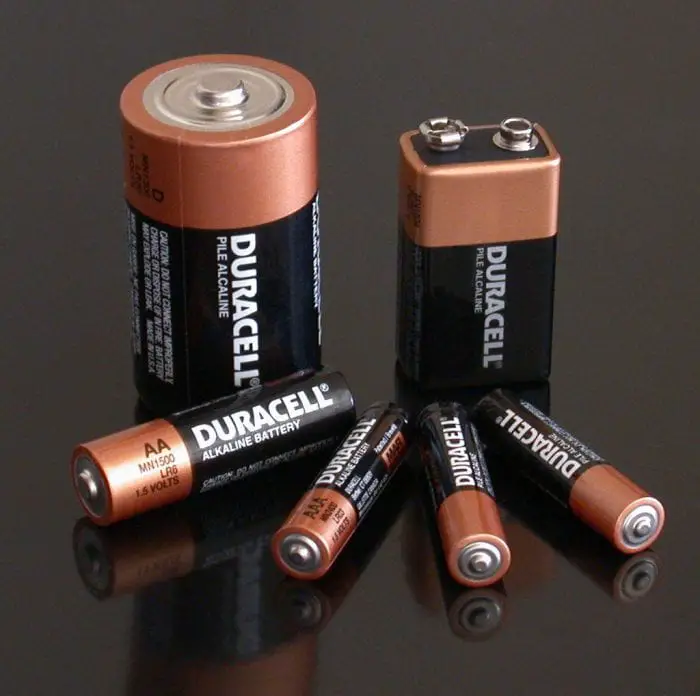
It is also available in a wide range of sizes. You can see these alkaline batteries being frequently used in daily electronics. However, before using this type of battery, it is necessary to get to know more about its pros and cons:
Advantages:
- Longer shelf life compared to those that use chloride electrolyte batteries
- Higher energy density in comparison to other batteries – With such an advantage, you can expect this battery to deliver similar levels of energy while also being longer-lasting compared to other batteries.
- Usable for hundreds of times – This is possible for the rechargeable alkaline battery if you recharge it after only 25% of its entire capacity is consumed.
- Less expensive compared to other sophisticated types containing cadmium and nickel
- Disposable as normal waste without requiring special disposal methods
- Delivers an incredible performance even when used at low temperatures
- It can last for up to 2 years when stored at room temperature while retaining around 90% of its original capacity once that happens.
You can also expect alkaline batteries to perfectly suit applications with normally low current used. These applications include devices that operate without the need for a huge amount of power as well as those gadgets used only periodically, such as radios and remote controls. You do not also need to worry about it going bad due to age as there is a low chance that it will happen.
Aside from the shelf life, an alkaline battery also boasts of its longer lifespan in comparison to its counterparts so there is no need to replace it too often. However, it also carries a few flaws, like:
Disadvantages:
- High internal resistance, thereby minimizing run time and creating an advance “low-battery warning in the majority of devices.
- Not that long-lasting when used in applications with high requirements for start-up current or need plenty of power when used
- The rechargeable variety has lower performance compared to standard alkaline batteries.
Despite that, alkaline batteries still continue to gain traction nowadays.
Can You Recharge Alkaline Batteries?
Charging or recharging alkaline batteries is not highly recommended, although that is possible with the help of a special alkaline charger, which you can use to the rechargeable alkaline. There are several reasons why recharging the battery is not recommended.
One of these is that charged ones can supply only a few recharge cycles. What you get is a dozen of recharge cycles, sometimes even less. This is not the same with a real rechargeable, such as NiMH, since you can also recharge it for hundreds or thousands of times.
Alkaline batteries also tend to lose their capacity per charge cycle. This means that each time you recharge the battery, its run time will also go lower. The rechargeable variety of alkaline batteries also usually features a smaller capacity compared to the real ones as well as NiMH rechargeable batteries. Recharging it will also increase its likelihood of leaking.
The good news is that despite the fact that charging alkaline batteries is not recommended, there are still special chargers that you can use to do so. Note that it is necessary to invest in a high-quality special charger specifically designed to charge alkaline batteries if you insist to do it.
Avoid using a charger for NiCd, NiZN, or NiMH. You need a charger, which is specifically designed to deal with and handle alkaline batteries.
Maximal Power FC999 Universal Rapid Charger
The Maximal Power FC999 Universal Rapid Charger uses an 8-bit microprocessor, and advanced RISC architecture, with integrated converter and multi-channel high-speed input/output ports to intelligently monitor and control the whole charging process in real-time, which can prevent overcharging. It also has built-in negative delta V cut-off function and short-circuits protection.
This charger is essentially a computer itself, so it can optimize the conditioning and charging cycles for each individual battery. During testing of this charger, they were able to recharge some alkaline batteries to 75-90% of original capacity up to and beyond 30 times! MORE THAN 30 TIMES! This isn’t a guarantee, but a rule of thumb, mileage will vary.
When you insert a battery into this charger, it determines the status of the battery and will either start charging if it’s good or alerts you to the status if it’s bad.
The Maximal Power Charger charges the following battery types:
|
|
The ability of this charger to charge different kinds of batteries, including alkaline batteries that are non-rechargeable in the past and the rechargeable alkaline manganese proves its versatility. This battery charger also works great, thanks to its high-speed discharging and charging ports. With its microchips, you have an assurance that it will monitor the batteries’ charging and recharging smartly and intelligently.
Another benefit I noticed about this special charger is that its charging speed is quite fast, so I can assure most users that it is less time-consuming to use. It boasts of its delta cut-off function, which is a great thing because it stops the charging process automatically once the batteries are already full, thereby preventing short circuits.
The features and functions of FC999 are simple and easy to use. You will even love its LED and LCD displays capable of illustrating the battery’s charging statistics once you put it in the charging bay.
ChargeIt Battery Station Pro
The ChargeIt Battery Station Pro Battery Charger uses the same microprocessor technology as the Maximal Charger but also has 2 built-in USB ports, allowing you to charge mobile devices! This charger also runs checks when a battery is inserted to determine if it’s good or bad and alert you to the battery’s status.
The ChargeIt Battery Charger charges the following battery types:
|
|
Just like the previous special charger from Maximal, this one is flexible and versatile, too as it can charge a wide range of batteries. It is capable of charging both rechargeable NiCD or NiMH batteries and disposable alkaline batteries. You will love its 4 universal charging docks capable of charging different types of batteries.
Another advantage of this special charger is that it is capable of simultaneously charging a max of 5 batteries, thanks to its 4 universal ports as well as another one that you can find in the 9V port.
It also features a couple of USB ports that you can use to attach and charge devices. I am sure you will like the LCD screen of this special charger, too, as it can display the level of charge in the battery and its charging status.
Final Words
While some manufacturers do not recommend and support recharging alkaline batteries due to the dangers that they might cause, it is still possible to recharge them through the available chargers specifically built for them. Just make sure that you pick a high-quality special charger, which can do a pretty good job of recharging your alkaline battery.
Also, take note that a recharged alkaline battery’s capacity has a higher risk of declining through a number of recharges. This is the main reason why you still have to take care of them, especially if you recharge them often. One thing to keep in mind is that alkaline batteries were not designed to be recharged, so some of them may leak.
After you charge them, let them sit on a safe surface and watch for leakage for a few days. This is important in ensuring that they will not leak in your electronic devices. The cheaper batteries seem to do this more than the high-quality ones.
With a small solar setup, you can charge rechargeable batteries but by adding this charger to the mix, it would open the door to reusing alkaline batteries that most people will discard without a second thought.
The ability to recharge regular (alkaline) batteries will come in very handy, save you money and keep those batteries out of the landfill. It is recycling, therefore, it is good for the environment and smart prepping!

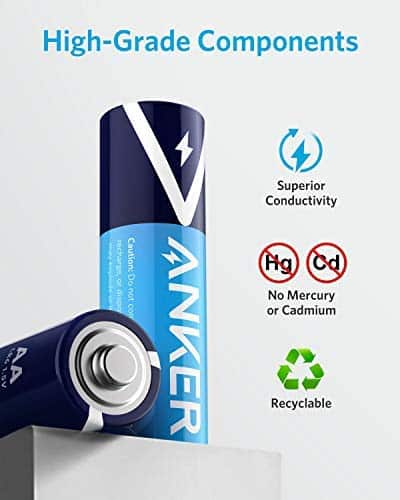
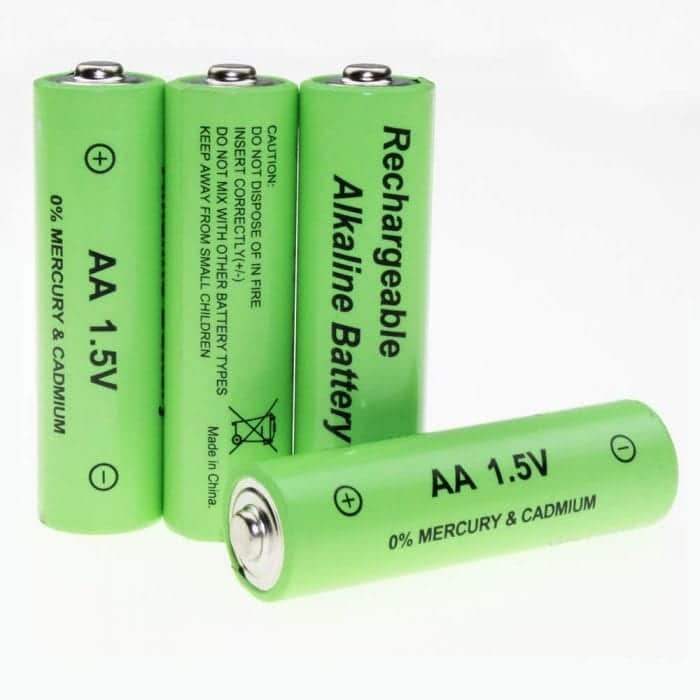
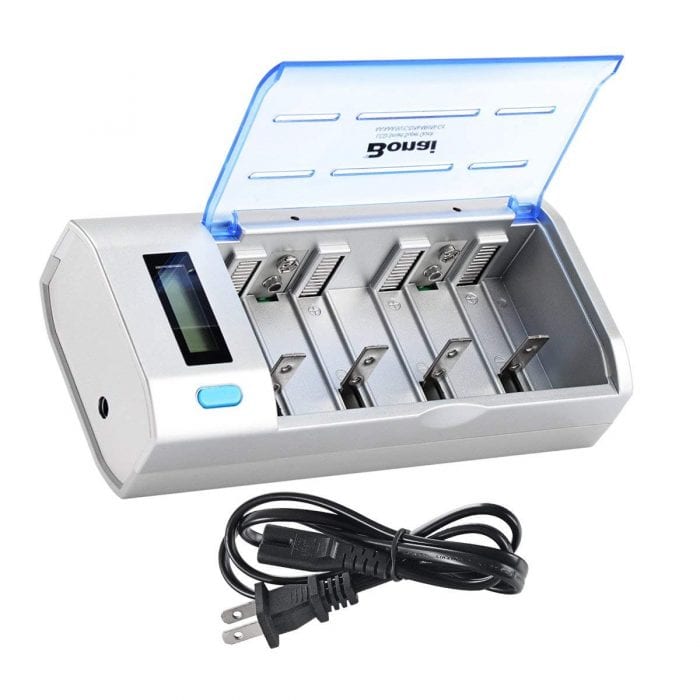

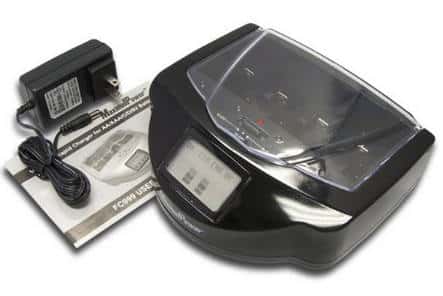
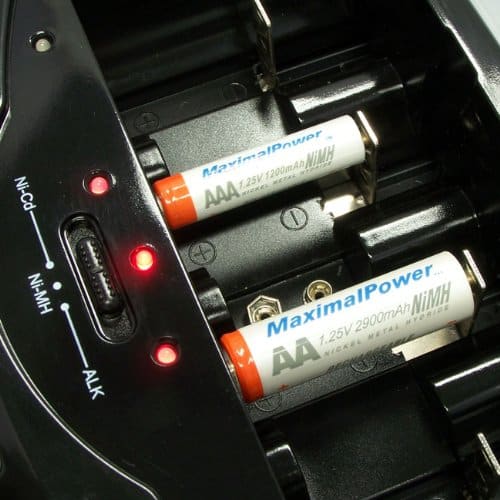
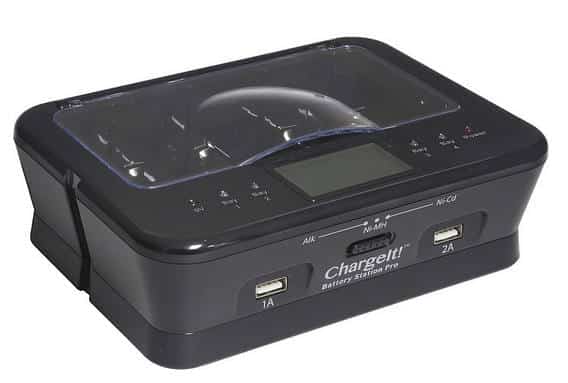

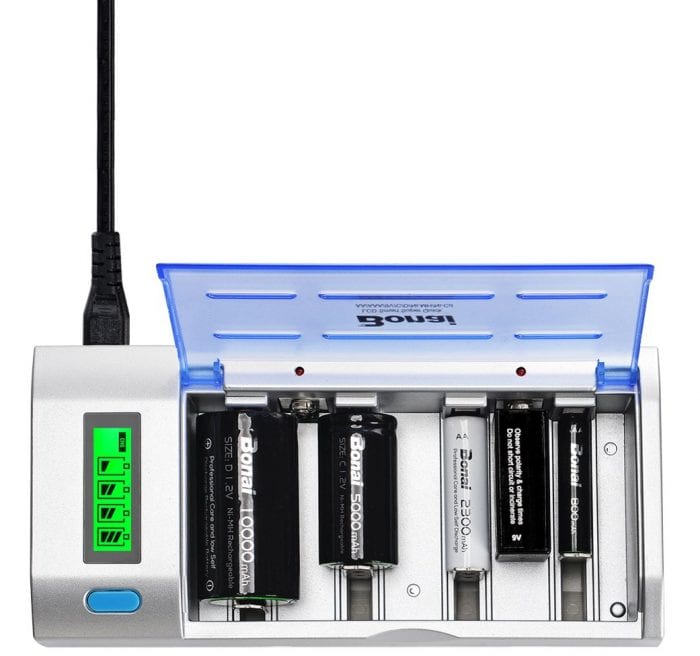
CAUTION! I too had read that you could recharge Alkaline batteries and I did buy the Maximal FC999 from Amazon and set about recharging my coffee can of used Duracell AA and AAA batteries. Everything looked great, the battery meter I got said that batteries had recharged so I stored 40 to 50 recharged batteries in empty prescription bottles. I went to use some the other day and the batteries had leaked a clear sticky fluid – I don’t what it was. I would NOT use those batteries in any of my equipment and threw all the used – recharged batteries away. This is no reflection on the charger, I do plan on buying some good quality rechargeable batteries and using the charger for those.
I was told to let the recharged alkaline batteries sit for about a week before trusting them to not leak.
Because non-rechargeable Alkaline batteries are not intended to be recharged they are not built to take the internal pressures that can occur during the process. Some are built better than others but all can leak. The new rechargeable alkaline batteries, (RAM or Rechargeable Alkaline Manganese), are said to have been designed to take the internal pressures that can occur during recharging. Also, trying to recharge any alkaline that has been deeply discharged will give less than satisfactory results especially if it has seen several repeated deep discharges. Like most battery chemistry’s the less deeply discharged they are the more life can be pumped back into them. Many battery chemistry’s can see several times the rated number of charge/discharge cycles if they’re not too deeply discharged each time. Deep cycle lead acid batteries are a classic example of this and are known to last well past their normal life when used in applications that only discharge them by 20% or less each time before recharging. Internal temperature during recharging is extremely important also. For this reason charging current is kept low to lower the risk of thermal runaway and subsequent rupture. Some chargers may pulse the current with a duty cycle and current level known to maximize charging time without causing to much internal heat. I think the secret to recharging any alkaline battery is a slow (lower current), charge. Being in a hurry and force feeding an alkaline will only increase the likelihood they’ll rupture.
can someone please let me know how to put MaimalPower Universal Battery Charger for alkaline battery’s on discharge? thanks, I lost manual?
Hello,
The FC999’s Ni-Cd setting will discharge the batteries before recharging them. This setting was designed to help prevent Ni-Cd batteries from developing any memory.
Got the Maximal Power Universal Battery Charger for our University Department. Just charged up about 70 various alkaline batteries for the coming Fall semester with some great, some good. Got 1.6 V or more on a whole bunch of AAs and the same for AAAs on the first charge. Left them to trickle charge to top them off. Got perhaps 30 AAs and AAAs that came to about 1.4 -1.48V on the first charge. Less success with the 9v. two post type. The two clips in the charger you attach the 9v to seem like they are going to snap off. Accidently left the charger running over the weekend and the 4 AAs came out ok, but the 9v. that was also charging ended up with 4.5v on Monday morning (and maybe leaking), when I know it was 7.8v. on Friday afternoon before I left work. It must have been damaged over the weekend I don’t recommend leaving the charger running for days at a time. OK in defense of the charger my 9 v. batteries aren’t the greatest, so maybe that’s influencing my results. Finally if the expiration date is up on the battery, it doesn’t seem to get as good a charge. Our department uses up a lot of batteries, so expiration dates won’t be a problem for us from this point on. Wish they made a model that had one or two more connections for the 9v batteries. The model we got only has one 9v connection in the middle. I think it’s well worth the money and it keeps batteries out of our landfills
You can recharge alkaline batteries with a regular NiMH charger and a cheap Intermatic timer. Charging just takes days rather than hours with a specialized charger. You can also find free batteries from recycling bins at stores. https://bits.greenslocal.org/articles/electronics-and-computers/can-you-recharge-alkaline-batteries/
First, I’d like to remind you of the old saying “There’s no new thing under the sun” or “There is no such thing as a free lunch.” Yes, you can recharge non-rechargeable batteries, use a bird cage as a chicken coop, etc., BUT you will soon learn the limitations and trade offs. The fact is that it’s just not designed to do the job you want it to do. You can even top up new 1.5V Alkaline battery to 2V, next day 1.9V, next day 1.8V, you know it will leak. Then capacity will drop dramatically with each recharge. It’s just not worth the amount of money, time and specialist charger to recharge your 20-cent Alkaline battery, so it’s worth 23 cents in the end at the cost of what $45?? You get what I mean.
2022 AAA Alkaline’s are running at 1$ each, not 20C. Teens I know go through 60$ per month in Alkalines. I got them onto a recharger and they are quite happy with the savings – spent on Pizza’s …..
been doing this for years. the Alkaline AA batts are best recharged for things like wireless mouse, remote controls, clocks and other low draw devices. It won’t give you 2 years of use in the mouse but it will still gave me at least a month’s use. I use a smart charger that also handles Lithium Ion batteries. It detects it as a NiMH and starts at 500mA rate and slows down to a trickle. 2 hours later I’m good to go. Starting voltage is 0.9V. End voltage typically 1.48V – 1.60V. No leaks so far. (It charges 18650 batteries at up to 2000mA rate)
Yep. Thats exactly what ive been doing.. Havent seen a single leak, and niether the battery or the charger even gets warm. I usually let them go overnight, so 8 hours or so.. You can get the cheap smart chargers for NiMH/Lion on ebay for next to nothing and they seem to do AA and AAA alkalines just fine..
I’ve recharged 1,000’s of AAA – to 9V Alakalines. Had a few leaks, burnt holes in a few trousers and shirt sleeves, learning the processes. I now easily recommend charging only batteries that are 60% or higher by the volt meter (still in the green section of the scale) I recommend a 5 – 7 charges then toss !
I’m interested that there has been no mention of cooling batteries in a climate controlled space. How does temperature impact the gas produced inside of sealed batteries? If a non-rechargable alkaline battery is cooled while recharging, how might this impact its longevity, the success of the recharge, the potential for leakage, etc.?
Like, if it’s 0°C/32°F outside and you recharge your batteries inside of an unheated garage that is under 40°F with one of these chargers, how would it impact the recharge as compared with it recharging at say 50°F, 60°F, 70°F, 80°F, etc.?
If you charge these batteries in a refrigerator or freezer, how might the recharge differ?
This is an electrochemical question worth considering for those thinking about recharging single use alkaline batteries.
Hmm, good question. I hadn’t even thought about that.
My gut feeling is that I doubt it’d make much difference. Or it might even make it more likely to bust from the difference in pressure between the temp inside vs outside the battery.
Take this with a grain of salt bc I don’t even know whether the temp difference wld actually equate to pressure… I’m just typing off the top of my head.
From the Ideal Gas Law PV-nRT, assuming a constant volume for the cell, as temperature goes up, so does the pressure. So if you can control the temperature, you can also control the pressure. if you control the pressure, you limit the leakers. If the cells have a certain coulombic efficiency, then when you over charge the cells the inefficiency of the re-charge limits the amount of overcharge that gets retained in useable capacity. So the slower the re-charge the less heat generated, because excess charge is not lost in the charging process. Also if you charge too fast, the heating can adversely affect the charge retention. I am still working out how I am going to implement my charging circuitry and I have no experimental data to share, but that is the essence of it. Don’t get confused by how I am saying this. All cells have a limited capacity. if you charge beyond the maximum capacity the overcharge is lost in heat. Once you start heating the cell, depending on the temperature rise you are basically limiting the capacity. Temperature rise is never good when it comes to charging any battery chemistry. That being said, some are worse than others.